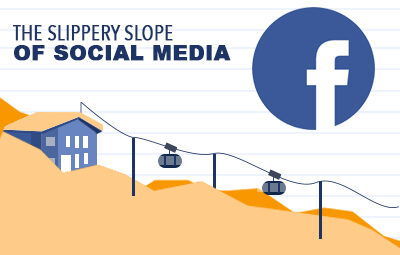After its release in 2004, Facebook quickly became the most crowded place on the internet. Even today, 13 years later, there’s an amazing level of activity: every single minute, 300 new profiles are created, 293,000 statuses are updated, 510,000 comments are posted, and 136,000 photos are uploaded (Nelson, 2017). The amount of content being posted has substantially exceeded our capacity to absorb it all.
BuzzSumo did a study analyzing about 880 million Facebook posts and brand pages over the past year and discovered that the average number of engagements had fallen by more than 20 percent (Hutchinson 2017). Facebook has thrown a large wrench into the content strategies of basically every non-personal Facebook page owner by instituting an algorithm that shows audiences less branded content and more interest-specific content on their feeds. It has made it much more difficult for businesses and institutions, such as the University of Michigan, to maintain organic reach—or really, any reach at all. We stepped back and asked ourselves why our strategy of posting more video content, which according to statistics should have worked, was not performing well.
About 2.5 million advertisers vie for attention on Facebook, and the number of brands using the platform has increased by 130 percent since 2013 (Patel, 2017). Pages are facing a ridiculous amount of competition to appear on fans’ feeds. So the new algorithm is designed to serve up content that will be most relevant to each Facebook user. And while a post might occasionally perform really well, it is becoming more difficult to achieve with any regularity.
At this point, most brands have done exactly what Facebook wanted them to do: ditch organic reach and start paying up for views and engagements. It is becoming the “unavoidable” option to recreate your marketing strategies (and, apparently, your budget) to add paid media marketing into the mix. With 42 percent of marketers reporting that Facebook is critical to their business, what other alternatives are there (Noyes, 2017)?
So what small steps can be taken to work with the new algorithm to ensure content is still performing well?
- Quality over Quantity – There are a lot of users, but also a huge amount of information competing for their attention, so the quality of posts—and the strategy behind them—really matters. Share content your audience cares about.
- Native Content – Original video content performs better. Also, keep that in mind that most users end up watching the video without sound.
- Unique Encouragement – Create new, innovative ways for your audience to engage with your content by making it more personable or desirable to share with family and friends—for example, call-to-action captions that encourage users to tag someone they would like to share with.
- Stay on Trend – Your audience wants to stay up to date, and if you’re touching on topics that are trending, chances are users will be seeking out information on it. So always keep your content topical.
Facebook is not going to stop growing anytime soon, both in terms of users and content. Institutions have to maintain their presence and the best way to do that is use Facebook’s algorithm as a challenge to make current strategies more innovative.
As always,
Be social. Stay social. #UMSocial
Post written by McKenna Whipple, Social Media Content Specialist at The University of Michigan.
Hutchinson, Andrew. (2017). New Study Finds Facebook Page Reach Has Declined 20% in 2017. SocialMediaToday.
Nelson, Kristoffer. (2017). Facebook News Feed Algorithm Unlocked: Optimizing for Greater Reach, Engagement. AdWeek.
Noyes, Dan. (2017). The Top 20 Valuable Facebook Statistics. Zephoria Digital Marketing.
Patel, Neil. (2017). Facebook’s Algorithm Revealed: How to Remain Visible in The Cluttered News Feed? NEILPATEL.



